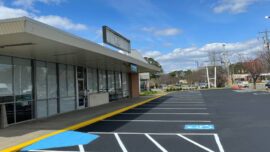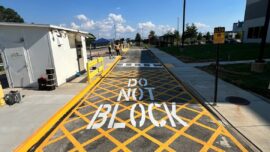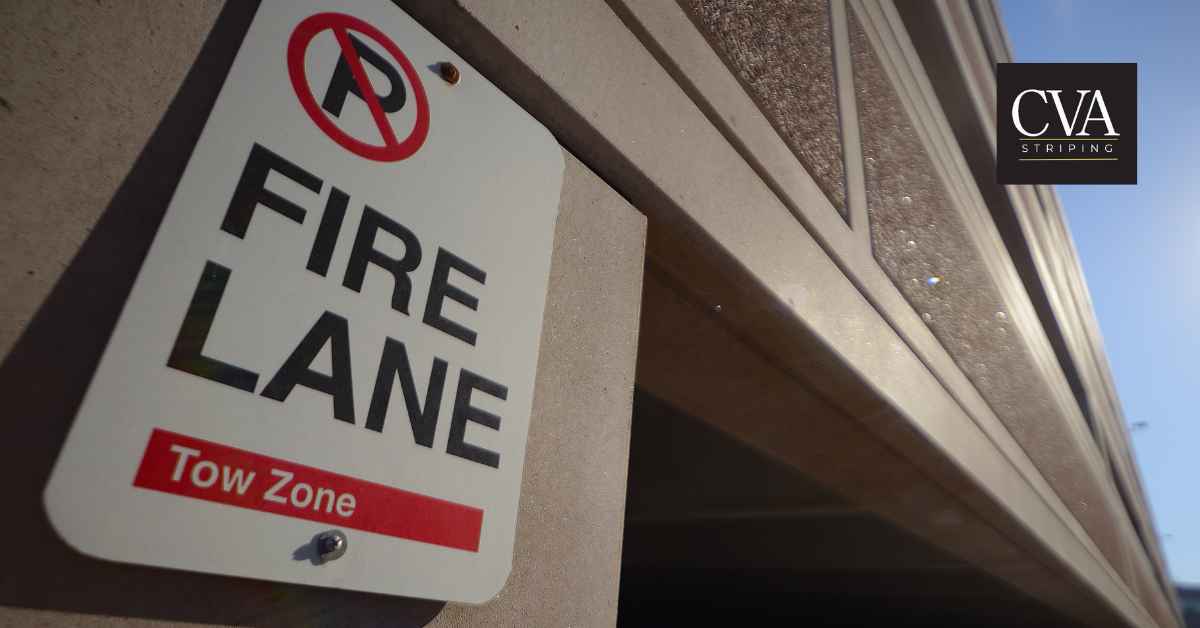
What is a Fire Lane? Understanding Its Purpose and Importance for Safety
Fire lanes are crucial components in urban and suburban planning, designed to ensure the safety and accessibility of emergency services. These specially designated areas are essential for providing unobstructed access for fire trucks, ambulances, and other emergency vehicles. Without clear and accessible fire lanes, response times can be significantly delayed, which can be the difference between a manageable incident and a catastrophic event.
In this blog, we’ll delve into the purpose of a fire lane, explore what is fire lane, and discuss the characteristics and legal considerations that govern these critical areas. By the end of this blog, you’ll have a deeper appreciation of the importance of fire lanes and the role they play in protecting lives and property.
What is the Purpose of a Fire Lane in Richmond?
A fire lane in Richmond, VA is a designated area kept clear for emergency vehicles, particularly fire trucks, to access buildings and hydrants quickly. The primary purpose of a fire lane is to provide unobstructed access to emergency services during fires, medical emergencies, and other urgent situations. This accessibility can make the difference between a manageable incident and a catastrophic event. Key purposes of a fire lane include:
- Fire lanes allow emergency vehicles to reach the scene of an incident quickly, minimizing response times.
- They provide a clear path for fire trucks and other emergency vehicles to access buildings, hydrants, and other critical points.
- By keeping these areas free of parked vehicles, fire lanes help ensure the safety of both emergency responders and the public.
- Fire lanes can also serve as evacuation routes, making it easier to move people to safety during emergencies.
- In addition to fires, fire lanes are essential for providing quick access during medical emergencies, ensuring that ambulances can reach patients promptly.
The Importance of Fire Lanes in Urban and Suburban Areas
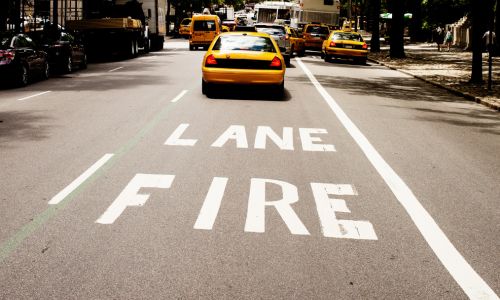
Fire lanes are essential in both urban and suburban areas due to the density of buildings and the potential for rapid fire spread. In cities
, narrow streets and heavy traffic can impede emergency responses, making fire lanes vital for ensuring quick access. Fire lane striping and clear signage help to maintain these crucial pathways, preventing vehicles from obstructing emergency routes. In suburban areas, where homes and buildings may be more spread out, fire lanes still play a critical role in providing a clear path for emergency vehicles. This ensures that even in less densely populated areas, emergency services can reach incidents quickly and efficiently, protecting both lives and property.
Characteristics of a Fire Lane in Richmond, VA
Fire lanes are typically marked with clear, visible signs and distinctive striping to indicate no parking zones. These areas must remain unobstructed at all times to ensure they are ready for emergency use. Fire lanes are often located near building entrances, hydrants, and along the sides of streets where parking could block emergency access. Key characteristics of fire lanes include:
- Clear, visible signs indicating no parking zones.
- Distinctive striping on the pavement to highlight the fire lane area.
- Unobstructed at all times for emergency use.
- Strategic locations near building entrances and hydrants.
- Placement along the sides of streets where parking could block emergency access.
- Designed and maintained in accordance with local safety regulations.
Legal Considerations and Regulations For A Fire Lane In Richmond?
Local and national regulations govern fire lanes to ensure they are properly maintained and accessible. These regulations specify the dimensions, signage, and maintenance required to keep fire lanes functional and legally compliant. Key legal considerations and regulations for fire lanes include:
- Mandatory Dimensions: Fire lanes must adhere to specific width and length requirements to accommodate emergency vehicles.
Signage - Requirements: Clear, visible signs must be posted to indicate the presence of a fire lane and no parking zones.
- Regular Maintenance: Fire lanes must be kept clear of obstructions and maintained to ensure visibility and accessibility.
- Enforcement: Local authorities are responsible for enforcing fire lane regulations, including issuing fines for violations.
- Zoning Laws: Fire lanes must comply with local zoning laws, which may dictate their placement and size.
- Permitting: Any changes or new installations of fire lanes may require permits from local government agencies.
What Are No Parking Fire Lane Signs and Why Are They Important?
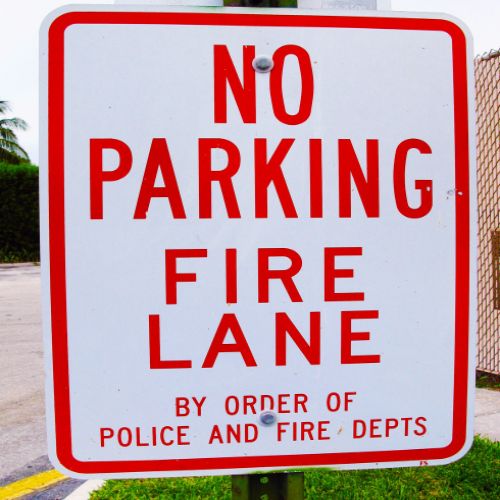
No parking fire lane signs are crucial markers that designate areas where parking is strictly prohibited to ensure that fire lanes remain clear for emergency vehicles. These signs are strategically placed in fire lanes to communicate to drivers that parking in these areas is illegal and could obstruct critical access for emergency responders. Key re
asons why no parking fire lane signs are important include:
- These signs help keep fire lanes clear, allowing emergency vehicles to reach their destinations quickly and without delay.
- By keeping fire lanes free of parked vehicles, these signs play a vital role in ensuring that emergency services can perform their duties effectively.
- Parking in a fire lane is illegal and can result in fines and penalties. No parking fire lane signs help inform the public of these regulations and encourage compliance.
- Clear signage makes it obvious where parking is prohibited, reducing the likelihood of accidental violations and ensuring that fire lanes are easily identifiable.
- In emergencies, fire lanes also serve as critical evacuation routes. Keeping these areas clear ensures that people can evacuate safely and efficiently.
Fire Lane Richmond, VA Design and Layout
Designing fire lanes involves careful planning to ensure they meet legal requirements and effectively serve their purpose. Proper design and layout ensure that fire lanes remain accessible and functional during emergencies.
Factors Influencing Fire Lane Design
- Building types and occupancy levels.
- Expected traffic flow and street width.
- Proximity to fire hydrants and emergency exits.
- Local fire department requirements and recommendations.
- Zoning laws and building codes.
Typical Dimensions and Specifications
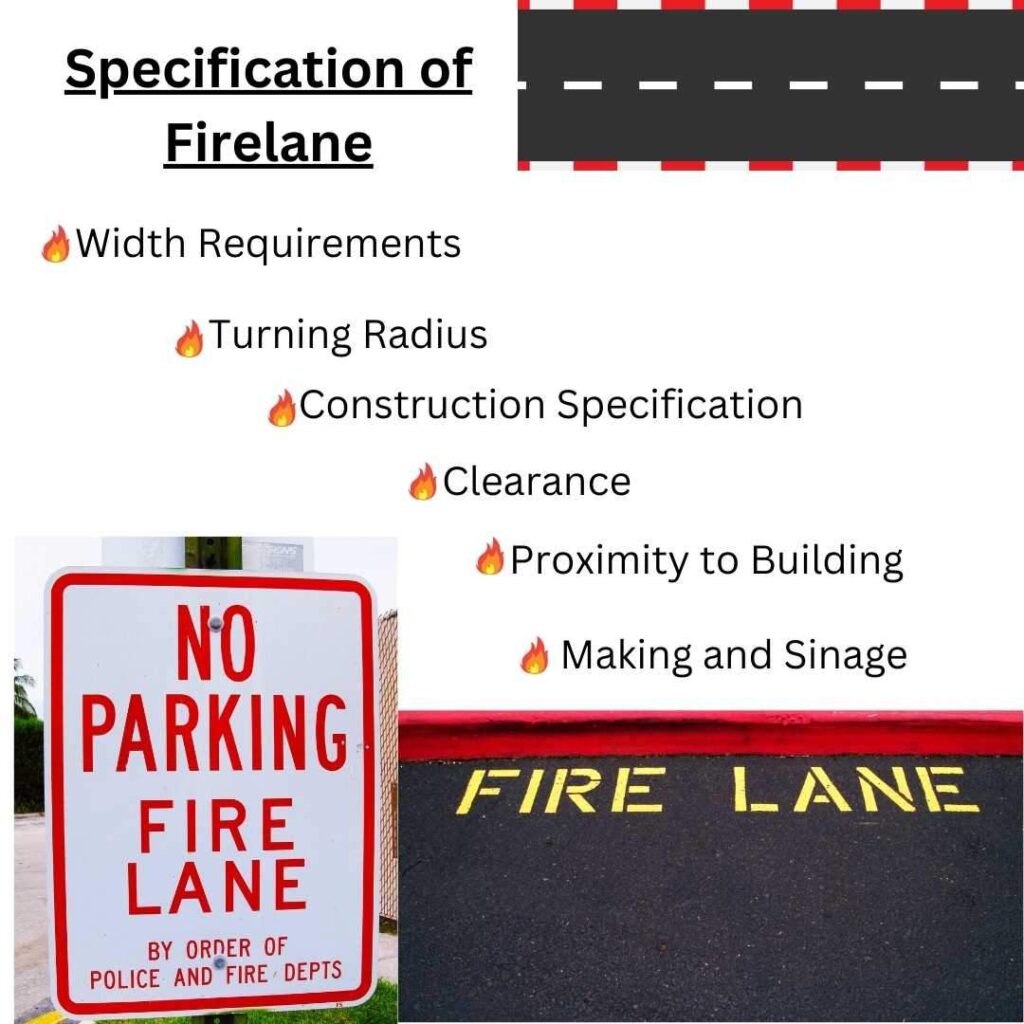 Typical dimensions and specifications for fire lanes are established to ensure they can adequately support emergency vehicles and operations. Key details include:
Typical dimensions and specifications for fire lanes are established to ensure they can adequately support emergency vehicles and operations. Key details include:
-
- Width Requirements
Fire lanes must be at least 24 feet wide for aerial apparatus access roads and generally range from 12 to 30 feet depending on the area and type of apparatus.
- Width Requirements
-
- Turning Radius
The minimum turning radius is typically 30 feet for fire lanes up to 26 feet wide and 20 feet for lanes wider than 26 feet.
- Clearance
A minimum vertical clearance of 14 feet is required to accommodate emergency vehicles. - Proximity to Buildings
Fire lanes for non-aerial apparatus should be within 15-30 feet of a building, as deemed necessary by fire safety authorities. - Construction Specifications
Fire lanes should have an all-weather, dust-free driving surface capable of supporting an 80,000 lb. fire apparatus, typically constructed with a minimum 6-inch thick, 4000 PSI concrete surface. - Marking and Signage
Fire lanes must be clearly marked with red traffic paint and signage indicating “NO PARKING FIRE LANE” at intervals of 25 feet on both sides of the lane. Signs must be 12 inches wide and 18 inches high, with red letters on a white background.
Final Thoughts on the Importance of Fire Lanes for Community Safety
Therefore, fire lanes are essential for ensuring emergency services can respond quickly, protecting lives and property. Their strategic placement and clear markings help maintain unobstructed access for emergency vehicles. By understanding and adhering to fire lane regulations, we can significantly enhance community safety and preparedness. Clear fire lanes mean faster response times and better outcomes during emergencies. Every member of the community plays a role in keeping these lanes accessible.
For expert fire lane striping services, trust CVA Line Striping LLC to ensure compliance and safety in your community. Contact us today to learn more about how we can help maintain clear and effective fire lanes in your area.
Fire Lane FAQs
What Is Considered Parking in a Fire Lane?
Parking in a fire lane means stopping or leaving a vehicle in an area designated as a fire lane, even temporarily. This can obstruct emergency access and lead to fines.
What Is Considered a Fire Lane?
A fire lane is an area marked by signs and striping indicating that parking is prohibited to ensure access for emergency vehicles.
What Is the Fine for Parking in a Fire Lane?
The fine for parking in a fire lane varies by location but can be substantial, reflecting the seriousness of the violation.
How Long Can You Park in a Fire Lane?
You cannot park in a fire lane at any time. These areas must remain clear for emergency use 24/7.
What Are the Dimensions of a Standard Fire Lane?
Standard fire lane dimensions typically range from 12 to 20 feet wide, depending on local regulations and the needs of emergency vehicles.
Can a Fire Lane Be Used for Temporary Loading and Unloading?
No, fire lanes must remain clear at all times. Using them for loading or unloading can obstruct emergency access and result in fines.
Are Fire Lanes Required in Residential Areas?
Yes, fire lanes are often required in residential areas to ensure emergency vehicles can access homes and other buildings quickly.
How Can You Report a Violation of Fire Lane Regulations?
To report a fire lane violation, contact your local fire department or law enforcement agency. They can take appropriate action to ensure compliance.
What Are the Consequences of Obstructing a Fire Lane?
Obstructing a fire lane can result in fines, towing of the vehicle, and delayed emergency response times, potentially endangering lives and property.


